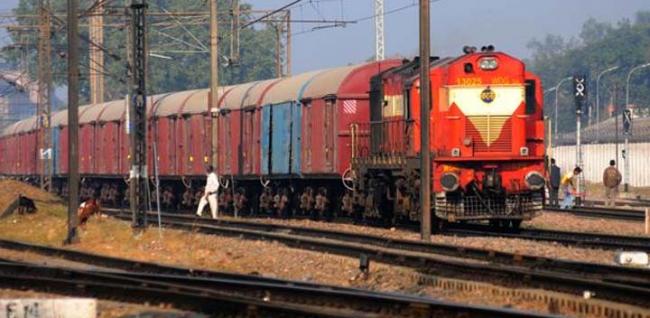Railways, Lifeline Of The Nation

Ravi Valluri
There is a well-used adage, “If wishes were horses, men would fly,” alluding to a predisposition of humans to transcend mountains, skies and water bodies like the avian species. Humans through the innovative ability and ingenuity of the Wright brothers realised the cherished dream of being airborne.
Delving further, the wheel is an acclaimed invention that engineered and triggered the growth of transportation. Man navigated rivers and oceans by constructing boats and ships. In today’s world mankind has crossed farther frontiers by launching spaceships and rockets. But the quest for more efficient and superior transportation remains relentless. Tesla is audaciously working to transport humans to Mars; simultaneously the company is working on the Hyper Loop to haul cargo and men within minutes across sizeable distances.
Rewind to April 16, 1853; a truly momentous day when iron trudged on iron. It appears aeons ago. Yes, 165 years to be precise. This was day when ‘Sahib’, ‘Sindh’ and ‘Sultan’, three robust steam engines hauled 14 carriages on broad gauge track over a distance of 34 kilometres. This historic journey took place between Boribunder (in present day Mumbai) and Thane. Perhaps few railwaymen are cognizant of the fact that initial plans to lay railway infrastructure in the subcontinent were conceived as far back as 1832 in Madras (now Chennai).
However, the First War of Independence in 1857 (or the Mutiny of 1857) had rattled the British in a chilling manner. Thus it was that the East India Company gave way to the Empire of Her Majesty, and India was conquered and enslaved by England. The ‘natives’ became subjects of the British.
Astutely, the British realised that to subjugate the Indians they required muscle. And this brawny flesh was organised in three forms - the defence forces, the railways and the postal services. But it was the railways that developed into the lifeline of the nation providing the wherewithal to spread the Empire.
Today Indian railways operates around 23,000 trains daily to move approximately 3 million tonnes of freight cargo and more than 23 million passengers; no mean achievement! Indian Railways have become a crucial driver of the Indian economy. To run these trains, passenger and freight, the organisation has a gargantuan fleet of resources. At the apex level the organisation is headed by the Railway Board, which is further segregated into 17 Zonal Railways, 67 Divisional offices and several production units. The apparently monolithic organisation has an assemblage of 10,000 locomotives, 58,000 coaches with aggregate seating capacity of 50 lakh, 2.5 lakh wagons with aggregated freight carrying capacity of 13.5million tonnes and about 66,000 route kilometres of network.
Two singular events are etched in the alcoves of my mind. While working in MILRAL, a unit of Indian Railways housed in Sena Bhavan, I was involved in transportation of our troops to the borders. It was a riveting and thrilling experience. Remember Pokhran 2? The year was 1998 and Indian Railways and the defence forces worked in tandem to transport our forces to hedge and safeguard various vulnerable areas against inimical forces.
A few years later, I was posted at Bikaner when the dastardly attack on the Indian Parliament took place. Once again it was the life line of the nation, the Indian Railways that mobilised all available resources to help safeguard our frontiers. All cargo (except thermal powerhouse rakes) and all passenger carrying trains were terminated. The only movement that took place on the Indian Railways was mobilisation of troops, Operation Parakram. I do feel a sense of pride, even if it was only a ringside participation.
In good times and in bad, it is this lifeline that weaves the nation together through the criss-crossing network, connects the entire nation into a common thread.





